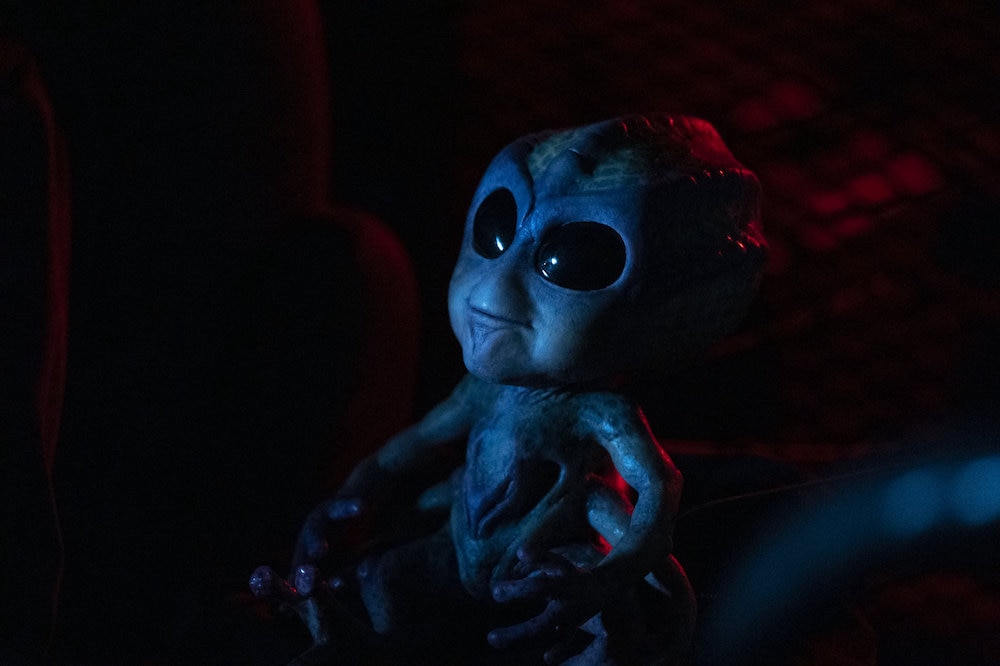Create a free profile to get unlimited access to exclusive videos, sweepstakes, and more!
What Does Dark Matter Look Like? The Euclid Telescope Could Reveal It Soon
And it's just getting started.

Do you ever look out at the night sky and wonder just where the heck everyone is? If stories like SYFY’s Resident Alien (streaming now on Peacock, by the way!) are any indication, the universe is filled with intelligent extraterrestrials just waiting to visit our little planet and become our best friends. And yet, unless former intelligence officer David Grusch is telling the truth, we’ve yet to find compelling evidence of even a single E.T., let alone a bunch of them.
That’s not all that surprising, if you stop to think about. We’re not even really sure about the nature and origin of all the inanimate stuff in the universe, not to mention any potential people. All of your favorite parts of the cosmos, from stars and planets to supernovae and black holes, is made of ordinary matter and accounts for only about 5 percent of what’s actually out there. All the rest is mysterious dark energy and dark matter. Even their names betray their nature; we call them dark because we can’t see them and don’t know what they are. Recently, though, the European Space Agency (ESA) launched their shiny, new Euclid telescope to investigate those most mysterious parts of the universe. It just sent back its first pictures.
Euclid’s First Test Images
Euclid launched on July 1, 2023, and spent the better part of a month getting settled into its orbital lab space. From Earth, it travelled approximately 1.6 million miles, roughly 6 times the distance to the Moon, to join the JWST at Earth’s second Lagrange point, known as L2. Lagrange points are useful for spacecraft because they are more or less gravitationally stable. You can park a spacecraft inside a Lagrange point and it’ll stay where you left it with minimal adjustments needed.
RELATED: Euclid Mission: Shining a Bright Light on Dark Matter
Roughly a month after launch, Euclid sent back its first test images from space on July 31, 2023. The images contain a gorgeous slice of the night sky, revealed in stunning detail. Euclid is designed to create an expansive 3D map of the universe, spanning both space and time.
Its mission relies on two onboard instruments, which will work together to image the universe in visible and infrared light. Euclid’s VIS instrument is a visible light telescope which captures the same sort of light you’d see through backyard telescope, just a lot more of it. It will take high-resolution images of billions of galaxies to map their shape and orientation. Next, the Near-Infrared Spectrometer and Photometer (NISP) will gather light in infrared wavelengths, but it will also look for the amount of light in specific wavelengths, something which can help astronomers determine their distance.
Combining data from both instruments will allow astronomers to build a 3D map of galaxy distribution throughout the universe, stretching backward through time. These first images aren’t intended for scientific research (there will be plenty of those kinds of images later) but they do confirm that the telescope’s instruments are working correctly.
By understanding how galaxies are distributed not just today, but throughout the history of the universe, astronomers hope to better understand the role and nature of dark matter and dark energy. That is Euclid’s mission.
“The outstanding first images obtained using Euclid’s visible and near-infrared instruments open a new era to observational cosmology and statistical astronomy. They mark the beginning of the quest for the very nature of dark energy, to be undertaken by the Euclid Consortium,” Euclid Consortium lead Yannick Mellier said, in a statement.
The successful test images come on the heels of an early mission scare. Then the telescope first turned on, astronomers noticed an unexpected light pattern. They later discovered it was the result of sunlight leaking into the telescope. Fortunately, reorienting the telescope resolved that problem and the instruments otherwise appear to be tip top.
Testing on the Euclid Space Telescope will continue for another few months, giving astronomers a chance to put the telescope through its paces, before the primary mission begins in earnest. With any luck, and Euclid on our side, dark matter doesn’t stand a chance.
Catch the first two seasons of Resident Alien, streaming now on Peacock!
































